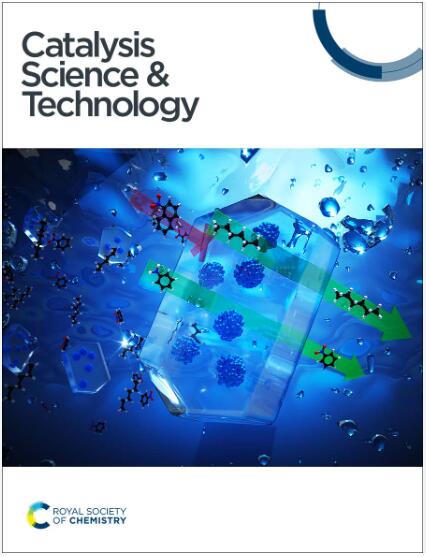DBD plasma combined with Ni–Mn/SiO2 catalysts modified by myristic acid for methane oxidation in presence of water vapor
IF 4.4
3区 化学
Q2 CHEMISTRY, PHYSICAL
引用次数: 0
Abstract
Plasma catalysis is recognized as a promising technology for the elimination of methane. However, co-existence of moisture in flue gas reduces significantly the adsorption capacity of catalysts toward CH4. Herein, Ni–Mn/SiO2 catalysts were tuned by controlling the Ni/Mn molar ratio and subjected to hydrophobic treatment using myristic acid to promote methane oxidation under humid conditions. The plasma–catalytic system demonstrated a substantial improvement in CH4 conversion and CO2 selectivity compared to the plasma-only system owing to the synergistic effects of plasma and catalysis on methane degradation. The increase in the Mn/Ni molar ratio promotes the formation of Mn4+ on the catalyst surface and increases the specific surface area, facilitating the migration and adsorption of reactive oxygen species, which further improves the catalytic activity of methane oxidation reaction. In the presence of 5% water vapor, Ni–Mn(1 : 1)/SiO2–MA exhibited the highest CH4 conversion of 93.5% at 40 W. Due to the introduction of myristic acid with non-polar alkyl groups, a highly hydrophobic surface was obtained on modified catalysts, preventing the coverage of the active sites and promoting CH4 adsorption. This study provides a new and viable solution to improve the performance of catalysts in methane oxidation under high-humidity conditions.
DBD等离子体结合肉豆酱酸修饰的Ni-Mn /SiO2催化剂在水蒸气存在下氧化甲烷
等离子体催化被认为是一种很有前途的甲烷去除技术。然而,烟气中水分的共存显著降低了催化剂对CH4的吸附能力。本文通过控制Ni/Mn摩尔比对Ni - Mn/SiO2催化剂进行调剂,并用肉豆酱酸进行疏水处理,促进甲烷在潮湿条件下氧化。由于等离子体和催化作用对甲烷降解的协同作用,等离子体-催化体系在CH4转化率和CO2选择性方面比纯等离子体体系有显著提高。Mn/Ni摩尔比的增加促进了催化剂表面Mn4+的形成,增加了比表面积,有利于活性氧的迁移和吸附,进一步提高了甲烷氧化反应的催化活性。在5%水蒸气存在下,Ni-Mn (1:1)/ SiO2-MA在40 W时CH4转化率最高,达93.5%。由于引入了带有非极性烷基的肉豆蔻酸,改性催化剂获得了高度疏水的表面,阻止了活性位点的覆盖,促进了CH4的吸附。该研究为提高高湿条件下甲烷氧化催化剂的性能提供了一种新的可行方案。
本文章由计算机程序翻译,如有差异,请以英文原文为准。
求助全文
约1分钟内获得全文
求助全文
来源期刊

Catalysis Science & Technology
CHEMISTRY, PHYSICAL-
CiteScore
8.70
自引率
6.00%
发文量
587
审稿时长
1.5 months
期刊介绍:
A multidisciplinary journal focusing on cutting edge research across all fundamental science and technological aspects of catalysis.
Editor-in-chief: Bert Weckhuysen
Impact factor: 5.0
Time to first decision (peer reviewed only): 31 days
 求助内容:
求助内容: 应助结果提醒方式:
应助结果提醒方式:


